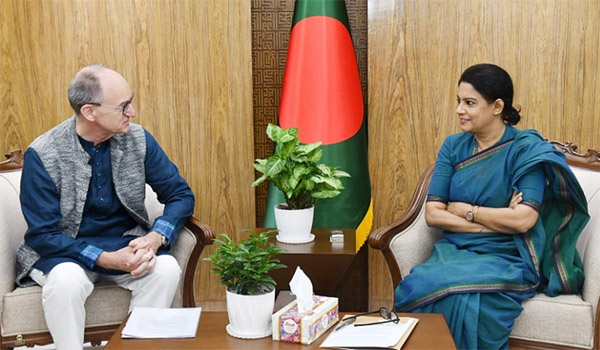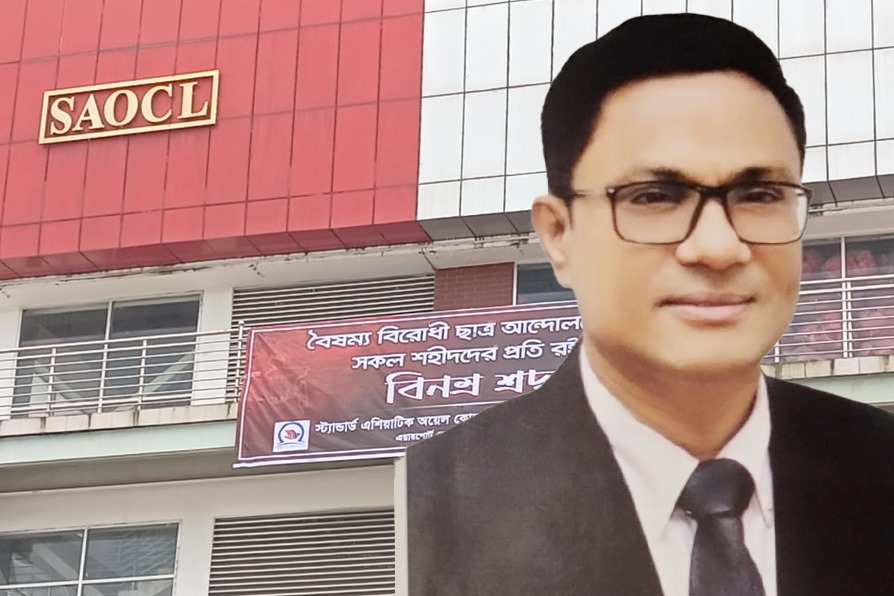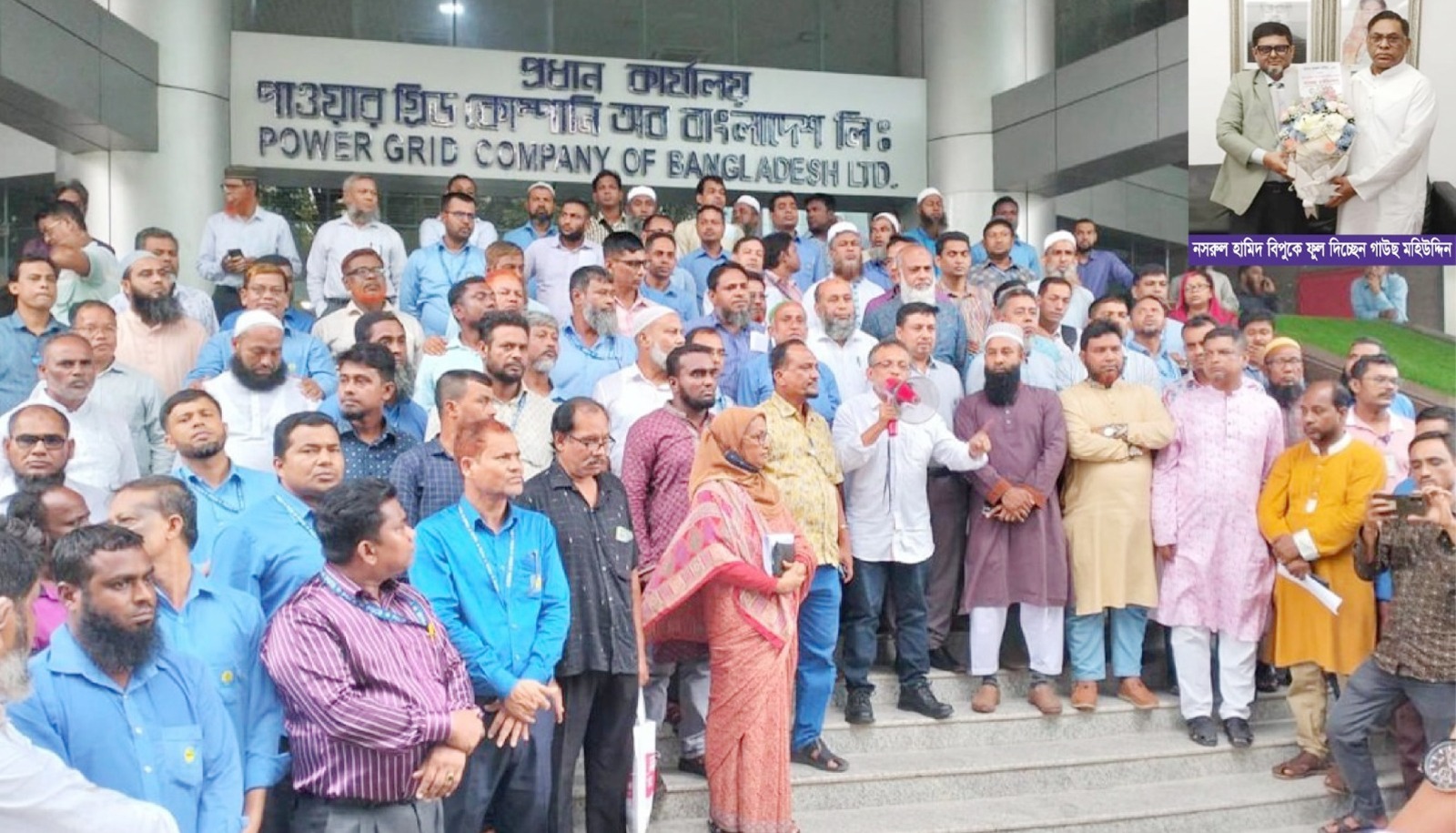
Sir Salimullah Medical College (SSMC) stands as one of Bangladesh’s premier medical institutions, deeply rooted in a tradition of excellence in medical education, research, and healthcare. Situated in the heart of Dhaka, the capital city, this venerable institution has, for decades, produced some of the most skilled medical professionals in the country. SSMC has not only contributed significantly to Bangladesh’s healthcare system but also to the global medical community, with its graduates excelling in various medical fields worldwide.
The story of Sir Salimullah Medical College is not just about an academic institution but is also about the evolution of medical education in the Indian subcontinent, the changing face of healthcare in Bangladesh, and the enduring legacy of one of the nation’s most important medical colleges. This article explores the history, academic structure, achievements, and the future of SSMC in over two decades of its existence.
Sir Salimullah Medical College’s history dates back to the early 19th century, a period when the Indian subcontinent, under British colonial rule, was beginning to see the establishment of modern educational institutions. The roots of SSMC can be traced to the founding of Dhaka Medical School in 1875, a significant step in the development of medical education in Bengal, which was part of the British Empire at the time.
The Dhaka Medical School, though small, was an ambitious project aimed at providing medical education and training to young men in Bengal. Over time, as the demand for more comprehensive medical education grew, the institution underwent significant transformations. By 1925, it had evolved into Mitford Hospital, named after Sir Robert Mitford, the then-collector of Dhaka, who had been a key advocate for establishing a hospital and medical school in the region. Mitford Hospital was among the earliest modern hospitals in Bengal and played a crucial role in delivering healthcare to the people of Dhaka and the surrounding areas.
In 1962, as part of the larger efforts to modernize and expand medical education in East Pakistan (now Bangladesh), the government upgraded the institution into a full-fledged medical college and renamed it after Nawab Sir Khwaja Salimullah Bahadur, a prominent figure in Bengal’s political and social life. Sir Salimullah was renowned for his contributions to the welfare of Dhaka’s citizens, and the decision to name the college after him was a tribute to his legacy.
Since its formal establishment as Sir Salimullah Medical College, the institution has grown exponentially, expanding its educational programs, improving its infrastructure, and increasing its impact on Bangladesh’s healthcare system.
The Sir Salimullah Medical College is located in the historically rich and culturally vibrant area of Old Dhaka, adjacent to the Buriganga River. The college shares its campus with Mitford Hospital, which remains a vital part of the institution’s medical training and healthcare services. As one of the oldest hospitals in Bangladesh, Mitford Hospital serves a dual purpose: it functions as a major healthcare provider for the residents of Dhaka and beyond, and it offers SSMC students invaluable practical experience in real-world medical scenarios.
The college campus is a blend of history and modernity. While some of its buildings date back to the early 20th century, newer constructions provide state-of-the-art facilities for medical research, teaching, and student accommodation. The college’s classrooms and lecture halls are equipped with modern audio-visual aids, allowing for a more interactive and engaging learning experience. In addition, the college has a well-stocked library that provides students and faculty with access to a wide range of medical literature, journals, and research papers.
In recent years, the institution has invested in modern laboratories, including specialized labs for biochemistry, pathology, and microbiology, ensuring that students receive hands-on training in the latest medical techniques and technologies. The campus also includes hostels for male and female students, ensuring that those coming from different parts of the country have access to safe and comfortable accommodations.
Sir Salimullah Medical College offers a comprehensive Bachelor of Medicine, Bachelor of Surgery (MBBS) program, which spans five years, followed by a mandatory one-year internship. The curriculum is designed to provide a robust foundation in medical sciences, combining theoretical knowledge with practical training. SSMC follows the guidelines of the Bangladesh Medical and Dental Council (BMDC), and the curriculum is regularly updated to align with global medical education standards.
The MBBS program is divided into four phases:
1. *First Phase (First and Second Year)*
During this phase, students focus on the basic medical sciences, including anatomy, physiology, and biochemistry. These subjects lay the foundation for understanding the structure and functions of the human body. The first two years also include some clinical exposure, with students starting to visit wards and interact with patients under supervision.
2. *Second Phase (Third Year)*
The third year introduces students to pathology, microbiology, and pharmacology. These subjects help students understand the mechanisms of diseases, how drugs interact with the human body, and the role of microorganisms in causing illnesses. This phase marks the transition from basic sciences to more clinical-oriented subjects.
3. *Third Phase (Fourth Year)*
In the fourth year, students delve deeper into clinical subjects, including community medicine, forensic medicine, and social preventive medicine. The community medicine component is particularly important in Bangladesh, given the country’s public health challenges, such as infectious diseases, malnutrition, and maternal health issues. During this phase, students gain a deeper understanding of the health needs of different population groups and the role of preventive medicine.
4. *Final Phase (Fifth Year)*
The final year of the MBBS program focuses on clinical disciplines, including medicine, surgery, obstetrics and gynecology, pediatrics, and orthopedics. Students spend a significant portion of this year in clinical rotations, working alongside experienced doctors in Mitford Hospital. They are actively involved in patient care, diagnosis, and treatment, which prepares them for their roles as future medical professionals.
Following the completion of the academic program, students must undertake a one-year internship, which is an essential component of their training. This internship allows them to work under the supervision of senior doctors in various departments, gaining hands-on experience in medical practice.
SSMC offers a wide range of specialized departments that cater to different fields of medicine. These departments are equipped with experienced faculty, many of whom are leading experts in their respective fields. Some of the key departments include:
1. *Department of Medicine*
The Department of Medicine is one of the largest and most critical departments in SSMC. It covers various subspecialties, including cardiology, endocrinology, gastroenterology, nephrology, and pulmonology. The department is heavily involved in both undergraduate and postgraduate training, with students gaining exposure to a wide array of medical conditions.
2. *Department of Surgery*
The Department of Surgery offers training in general surgery as well as specialized fields such as neurosurgery, plastic surgery, and urology. Students undergo rigorous practical training, where they assist in surgeries and learn critical surgical techniques under the guidance of experienced surgeons.
3. *Department of Obstetrics and Gynecology*
This department plays a crucial role in training students in women’s health, childbirth, and reproductive medicine. With Bangladesh facing challenges in maternal and child health, the department’s work is particularly significant in addressing these issues through both education and clinical services.
4. *Department of Pediatrics*
The Department of Pediatrics is dedicated to child health, focusing on diseases affecting infants, children, and adolescents. The department’s research into pediatric diseases, nutrition, and immunization is vital for improving child healthcare in Bangladesh.
5. *Department of Community Medicine*
This department focuses on public health and preventive medicine. Given the unique health challenges faced by Bangladesh, such as infectious diseases, population density, and limited access to healthcare in rural areas, the Department of Community Medicine trains students to think beyond individual patient care and to consider population-level health interventions.
6. *Department of Microbiology and Pathology*
These departments are crucial in teaching students the fundamental role of microorganisms in causing diseases and the pathological mechanisms of illness. Students gain experience in diagnostic microbiology, laboratory techniques, and pathology services.
Research is a vital component of any medical institution, and Sir Salimullah Medical College is no exception. The college encourages both its faculty and students to engage in research that addresses the pressing health challenges in Bangladesh. Given the country’s epidemiological profile, research at SSMC often focuses on infectious diseases, maternal and child health, malnutrition, and chronic diseases like diabetes and hypertension.
The college has its own academic journal, which publishes peer-reviewed research papers from both local and international contributors. The journal provides a platform for faculty and students to disseminate their research findings, contributing to the global body of medical knowledge. Additionally, SSMC has strong collaborations with other medical institutions and research organizations in Bangladesh and abroad, which helps in fostering a culture of academic inquiry and scientific exploration.
SSMC boasts an impressive alumni network that includes some of the most accomplished doctors and medical professionals in Bangladesh and around the world. Graduates of SSMC have gone on to specialize in various fields, such as surgery, cardiology, oncology, and public health, making significant contributions to healthcare both in Bangladesh and internationally.
Many SSMC alumni hold leadership positions in hospitals, medical colleges, and healthcare organizations, where they continue to impact medical practice and healthcare policies. Others have moved abroad to further their education and careers, particularly in countries like the United States, the United Kingdom, Canada, and Australia, where they have excelled in the medical field.
Despite their success abroad, many alumni remain connected to their alma mater, providing mentorship and support to current students and collaborating on research and development projects. The contributions of Sir Salimullah Medical College’s (SSMC) alumni extend beyond just their professional achievements. Many alumni actively engage in philanthropic work, medical missions, and other initiatives aimed at improving healthcare access and outcomes, particularly in underprivileged regions of Bangladesh. Some have returned to Bangladesh to serve in government healthcare programs or to establish non-governmental organizations (NGOs) focused on public health, education, and community development.
In particular, alumni of SSMC have played a significant role in addressing critical health challenges in Bangladesh, such as maternal and child health, malnutrition, and infectious diseases like tuberculosis and malaria. By working with local healthcare providers, international aid organizations, and government health departments, these professionals have made measurable differences in the well-being of communities throughout the country.
Moreover, SSMC graduates are often at the forefront of healthcare innovation. Many have taken leadership roles in introducing modern healthcare technologies, treatments, and healthcare management systems in Bangladesh. Their expertise is helping to bridge the gap between traditional healthcare approaches and the increasingly high-tech world of modern medicine.
In the global context, SSMC alumni have continued to leave a lasting impact. Whether they are practicing in leading hospitals around the world, contributing to groundbreaking medical research, or teaching the next generation of doctors, SSMC graduates uphold the values of their alma mater—dedication, excellence, and a commitment to serving humanity.
Despite its long history of achievements and contributions, Sir Salimullah Medical College, like many institutions in Bangladesh, faces a variety of challenges. These challenges range from the need for more investment in infrastructure and technology to the evolving landscape of healthcare education. However, these obstacles also present opportunities for growth and improvement in the coming years.
1. *Need for Modernization of Infrastructure*
While SSMC is rich in history, its campus infrastructure needs continuous upgrades to meet modern standards of medical education and healthcare delivery. The hospital wards, classrooms, laboratories, and research facilities require ongoing modernization to keep pace with the latest developments in medical science and technology. With more state-of-the-art equipment, students will be better prepared for the increasingly technological nature of healthcare.
Investment in digital healthcare tools such as telemedicine platforms, electronic health records (EHRs), and simulation labs can greatly enhance the learning environment. Integrating these technologies into medical education would allow students to practice clinical skills in a controlled, risk-free environment and stay updated with global medical trends.
2. *Enhancing Research Capabilities*
While SSMC has made significant strides in research, there is ample room for further growth in this area. Increased funding for research initiatives and collaborations with international institutions would enhance the college’s ability to contribute to cutting-edge medical research. Given Bangladesh’s unique epidemiological challenges, research originating from SSMC could have a significant global impact, particularly in areas such as tropical diseases, public health, and community medicine.
Furthermore, SSMC could benefit from establishing stronger partnerships with both public and private organizations focused on health research. By participating in global health research initiatives, the institution can further cement its reputation as a leader in medical education and scientific inquiry.
3. *Addressing Healthcare Workforce Shortages*
Bangladesh, like many developing nations, faces a shortage of healthcare professionals, particularly in rural areas. SSMC can play a critical role in addressing this issue by increasing its enrollment capacity and offering incentives for graduates to work in underserved regions. Programs that encourage community-based practice, rural healthcare rotations, and public health work could help alleviate the uneven distribution of healthcare resources across the country.
Additionally, developing mentorship programs that connect experienced doctors with students and young professionals could help inspire more graduates to pursue careers in public health, primary care, and rural healthcare, areas where Bangladesh faces the most critical shortages.
4. *Globalization of Medical Education*
With the world becoming increasingly interconnected, there are tremendous opportunities for SSMC to enhance its international profile. Forming strategic partnerships with leading medical institutions around the globe would not only benefit students but also faculty, allowing for the exchange of ideas, research collaborations, and clinical expertise.
Encouraging more student exchange programs, internships abroad, and international conferences could help students gain exposure to healthcare systems outside Bangladesh, providing them with a more holistic view of medicine. This exposure would be invaluable, particularly as the healthcare landscape continues to evolve toward a more globalized and cooperative model.
5. *Improving Student Support and Well-being*
The rigorous demands of medical education, coupled with the often-overwhelming workload faced by medical students, make it crucial for SSMC to focus on student well-being. Initiatives aimed at improving mental health support, reducing student stress, and promoting work-life balance can contribute to producing well-rounded, empathetic, and resilient doctors.
Offering career guidance, counseling services, and mental health resources will not only help students perform better academically but also prepare them for the emotional challenges of working in the medical field.
As one of Bangladesh’s leading medical institutions, SSMC has an integral role in shaping the country’s healthcare policies and systems. The college has historically produced healthcare leaders who have been involved in the drafting of national health policies, particularly in areas such as maternal health, infectious disease control, and the expansion of healthcare infrastructure. SSMC’s close relationship with the Ministry of Health and Family Welfare of Bangladesh ensures that it remains at the forefront of healthcare reforms and public health initiatives.
For example, the faculty at SSMC have been involved in research and policymaking related to Bangladesh’s successful campaigns against diseases like polio, smallpox, and malaria. Furthermore, SSMC plays a key role in training public health professionals who later take on roles in the country’s healthcare administration, helping to manage programs related to vaccination, family planning, sanitation, and nutrition.
As the country continues to face emerging health challenges such as non-communicable diseases (NCDs), climate change-related health issues, and the aftermath of pandemics like COVID-19, SSMC’s role will be increasingly important. The institution is well-placed to contribute to national health strategies aimed at improving healthcare delivery and meeting the health needs of an expanding and aging population.
In addition to its national contributions, Sir Salimullah Medical College has also made a name for itself in the global health arena. SSMC graduates are active participants in the global medical community, contributing to international healthcare systems, conducting research on global health challenges, and participating in humanitarian missions in crisis-hit regions around the world.
One of the significant global contributions of SSMC graduates has been in the field of disaster medicine and humanitarian relief. Bangladesh, being a disaster-prone country, has produced medical professionals with extensive experience in managing health crises caused by natural disasters, such as floods, cyclones, and landslides. This expertise has made SSMC graduates valuable assets to international organizations such as the United Nations, World Health Organization (WHO), and Médecins Sans Frontières (Doctors Without Borders), where they work in disaster-stricken and conflict zones around the world.
Moreover, SSMC is increasingly involved in global health research collaborations. These collaborations, especially with institutions in South Asia, Europe, and North America, focus on tackling issues like antimicrobial resistance, tropical diseases, and global pandemics. As Bangladesh plays a pivotal role in global health due to its geographic location and dense population, SSMC’s contributions to these areas are critical.
Sir Salimullah Medical College is more than just a center of learning—it is an institution that has profoundly shaped Bangladesh’s medical landscape, produced generations of highly skilled medical professionals, and contributed significantly to the country’s healthcare system. From its historical beginnings as Dhaka Medical School to its current status as one of the country’s top medical colleges, SSMC has consistently strived to uphold the highest standards of medical education and patient care.
With a rich tradition of excellence, a growing reputation in both national and international circles, and a dedicated faculty and student body, SSMC stands poised to continue its legacy well into the future. As it embraces modernization, expands its research capabilities, and strengthens its international ties, Sir Salimullah Medical College is set to remain a beacon of hope, learning, and healthcare innovation in Bangladesh and beyond.

 Md. Anas Ebna Arfin (Nibir)
Md. Anas Ebna Arfin (Nibir) 


















